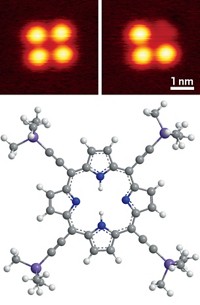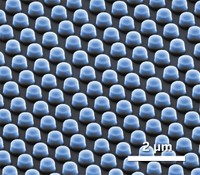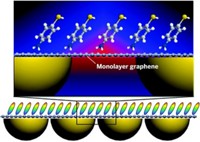Advertisement
Grab your lab coat. Let's get started
Welcome!
Welcome!
Create an account below to get 6 C&EN articles per month, receive newsletters and more - all free.
It seems this is your first time logging in online. Please enter the following information to continue.
As an ACS member you automatically get access to this site. All we need is few more details to create your reading experience.
Not you? Sign in with a different account.
Not you? Sign in with a different account.
ERROR 1
ERROR 1
ERROR 2
ERROR 2
ERROR 2
ERROR 2
ERROR 2
Password and Confirm password must match.
If you have an ACS member number, please enter it here so we can link this account to your membership. (optional)
ERROR 2
ACS values your privacy. By submitting your information, you are gaining access to C&EN and subscribing to our weekly newsletter. We use the information you provide to make your reading experience better, and we will never sell your data to third party members.
Analytical Chemistry
Scientists Synthesize Star-Fruit-Shaped Gold Nanoparticles
Nanomaterials: Particles’ shape could improve sensitivity of spectroscopic method
by Prachi Patel
March 15, 2012

Researchers continually seek to craft nanoparticles with complex, exotic structures to yield unique properties. Now chemists have made gold nanoparticles that look like star fruit (Langmuir, DOI: 10.1021/la300218z).
Scientists already use gold nanorods in medical imaging. And others have demonstrated that star-shaped nanoparticles have unique optical and electronic properties useful for detecting chemicals. Eugene R. Zubarev and Leonid Vigderman of Rice University thought that combining those two morphologies into star-fruit-shaped particles could lead to materials ideal for surface-enhanced Raman spectroscopy (SERS), a detection technique that relies on signals produced by molecules adsorbed onto gold surfaces and nanoparticles. Electromagnetic fields should concentrate at the tips of the star-fruit spikes, Zubarev says, and amplify the Raman signals of adsorbed molecules.
To make the gold star fruits, the researchers started by making gold nanorods with a pentagonal cross section using a technique Zubarev’s team reported in 2008 (J. Am. Chem. Soc., DOI: 10.1021/ja806043p). Next they stirred the rods into a solution of gold chloride, silver nitrate, and cetyltrimethylammonium bromide, to deposit more gold onto the nanorods. A few hours later, they filtered out the particles and observed the particles’ star-fruit shape using scanning electron microscopy.
The silver nitrate was the key to making the star-fruit shape, Zubarev says. Without it, the gold would have deposited evenly on the nanorods’ surface. But adding silver nitrate created a layer of silver bromide on the particles’ faces, hindering gold deposition. As a result, the highest rate of deposition happens at the rods’ five long edges, he says, “and the cross section becomes a star.”
The researchers also ran SERS experiments with the gold particles by placing them on a gold surface coated with 1,4-benzenedithiol. They found that Raman signals from 1,4-benzenedithiol were 25 times greater with the star-fruit particles than with the flat pentagonal nanorods.





Join the conversation
Contact the reporter
Submit a Letter to the Editor for publication
Engage with us on Twitter